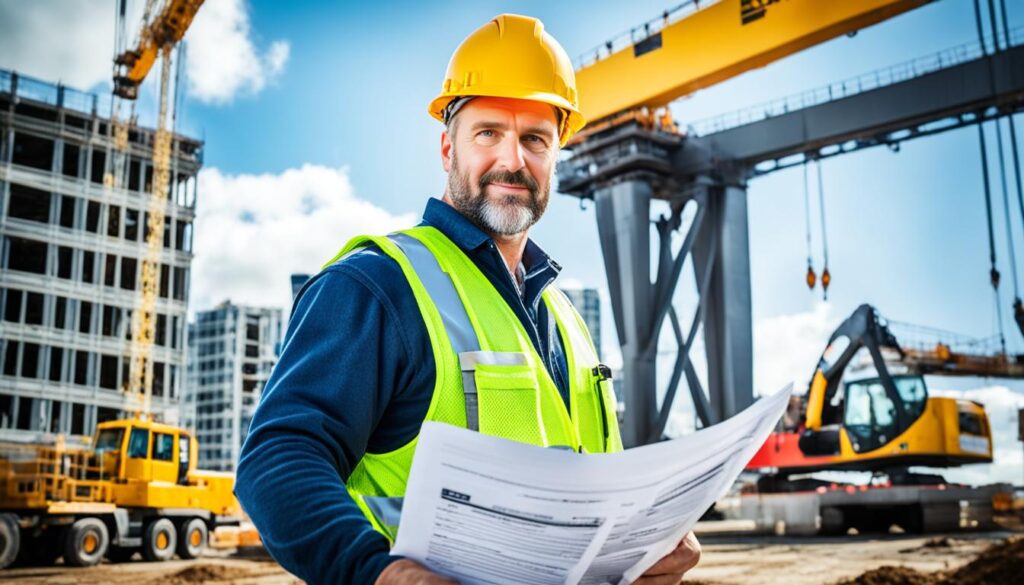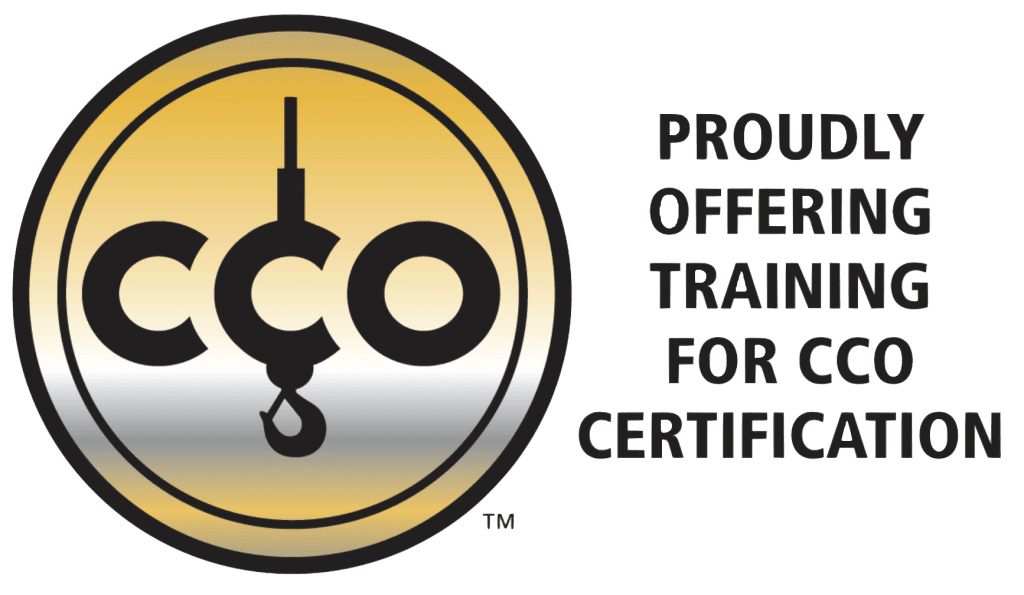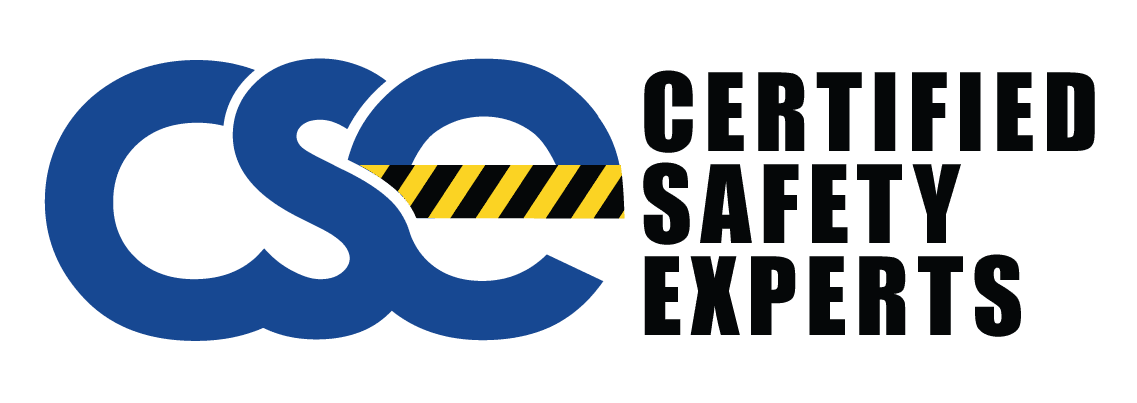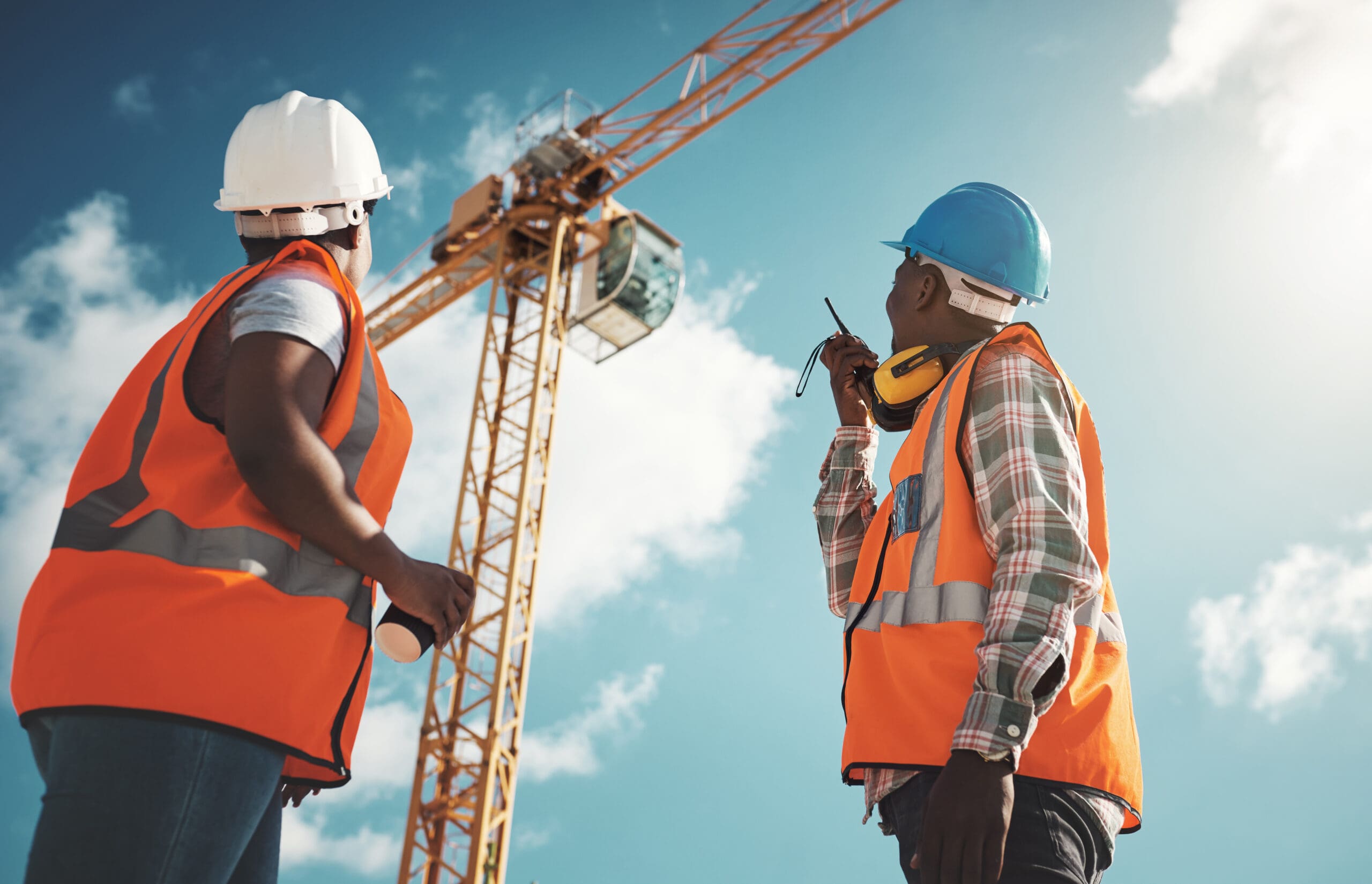More than 80% of crane accidents in the United States come from human error. This shows how crucial it is to follow crane safety regulations. We need to avoid accidents and keep construction sites safe. As the construction field changes quickly, keeping up with safety and rules is key for everyone involved.
Having the guidance of Certified Safety Experts is critical for companies. They help ensure safety standards are met. By working with these experts, companies can make their work areas safer. If you need help with crane safety rules, reach out to Certified Safety Experts at (919) 326-3742.
Key Takeaways:
- Human error accounts for over 80% of crane accidents in the U.S.
- Importance of adhering to crane safety regulations cannot be overstated.
- Certified Safety Experts are crucial for ensuring compliance and safety.
- Crane accident prevention measures significantly reduce risks in construction.
- Construction industry compliance is vital for maintaining workplace safety.
Understanding Crane Safety Regulations
Crane safety is crucial in construction, following OSHA standards for crane operations is key. Knowing these rules ensures safe crane usage and lowers work dangers.
OSHA makes firms craft safety guidelines to shield workers from crane mishaps.
Following construction safety protocols means training crane workers well. It includes doing regular checks to fix any mechanical problems. Employers also need to keep up with OSHA standards for crane operations to prevent fines and keep work sites safe.
Below is a table listing important parts of OSHA’s crane safety rules:
| Component | Description |
|---|---|
| Operator Certification | Mandates that all crane operators are certified to ensure safe crane usage. |
| Regular Inspections | Requires regular inspections of the cranes to ensure they are in good working condition. |
| Training Programs | Employers must provide training for workers to educate them on crane safety protocols. |
| Emergency Procedures | Establishes clear emergency procedures to follow in case of crane-related accidents. |
Having safety specialists can help a lot. They make understanding and using these rules easier. This way, companies can save money and promote safety at work.
Crane Operator Certification Requirements
Getting certified as a crane operator is very important. It makes sure operators know how to use cranes safely and well.

Eligibility Criteria
To become a certified crane operator, there are certain rules to follow. The NCCCO, a top certification group, sets these rules. They include:
- Being at least 18 years old.
- Being fit enough to safely operate a crane.
- Having the right experience and training with cranes.
Certification Process
Getting your crane operator certification is a big process. Places like the NCCCO take care of it. It involves several steps:
- Passing a test on what you know about cranes.
- Taking a test to show you can use a crane well.
- Learning more to keep up with what’s new in the industry.
- Renewing your certification every five years to keep it current.
Trained Safety Experts can really help. They make sure you’re ready for the tests and to keep learning after you’re certified.
Creating a Crane Inspection Checklist
To make cranes safe and dependable, a good crane inspection checklist is key. It should be kept up-to-date and used regularly. This checklist ensures safety at a high level.
Pre-Operational Checks
Before every use, a detailed daily crane safety check must be done. This includes looking at hooks, hoist chains, and ropes. It’s also important to check that the controls, brakes, and emergency stops work well to avoid dangers.
Steps for these checks include the following:
- Inspect hooks for deformation or cracks.
- Check hoist chains and wire ropes for wear and tear.
- Test all control mechanisms and ensure they respond correctly.
- Verify the operation of brakes and emergency stop systems.
- Ensure the load capacity is within safe limits.
Regular Maintenance Inspections
Regular crane maintenance is a must for safety and function. It’s important to have experts like those at Certified Safety Experts do these checks. They should be done monthly or quarterly to keep the crane working well.
Main maintenance jobs are as follows:
- Lubricating to prevent wear.
- Checking hydraulics for leaks.
- Inspecting electrics for damage.
- Ensuring safety signs are clear.
- Testing limit switches for function.
The ideal maintenance inspection schedule is below:
| Inspection Type | Frequency |
|---|---|
| Pre-Operational Checks | Daily |
| General Maintenance | Monthly |
| Comprehensive Inspection | Quarterly |
Crane Load Capacity Guidelines
Knowing about crane load capacity is key for safety in lifting tasks. The term means the most weight a crane can lift safely. It depends on the crane’s design, ground condition, and the weather. It’s vital for those running cranes and managing sites to follow these rules. It stops accidents and makes sure jobs go well.
The crane maker’s design details mainly decide how much it can lift. These details list the heaviest loads the crane can manage. Always look at these limits when planning lifts. Not doing so could cause the crane to break or hurt people.
The ground and the weather are also important for safe lifting. The ground must be firm for the crane to stand on and bear its load. Bad weather like strong wind or heavy rain can make things tricky. It means the crane might not lift as much as usual. Safety experts can help with checks to keep things safe. Adhering to these guidelines keeps the workplace safe and efficient.




